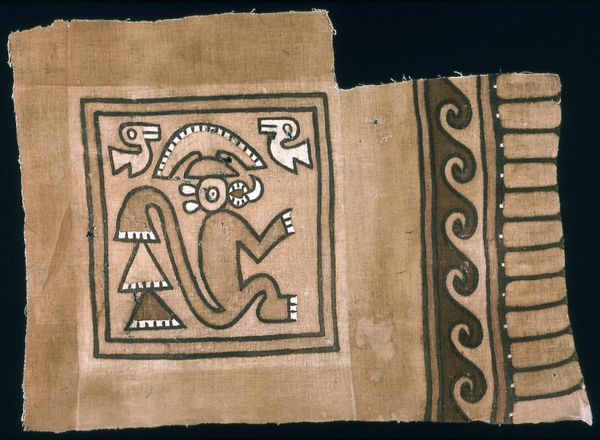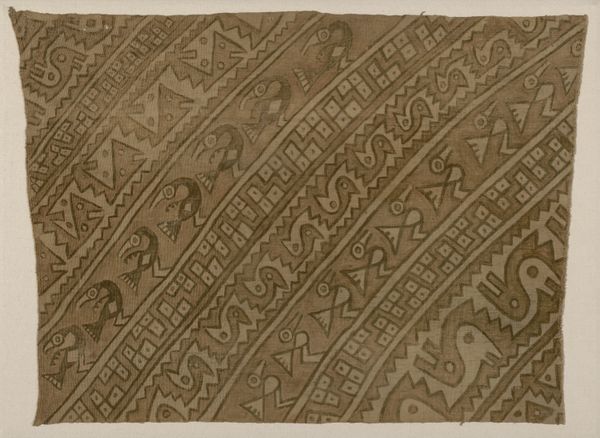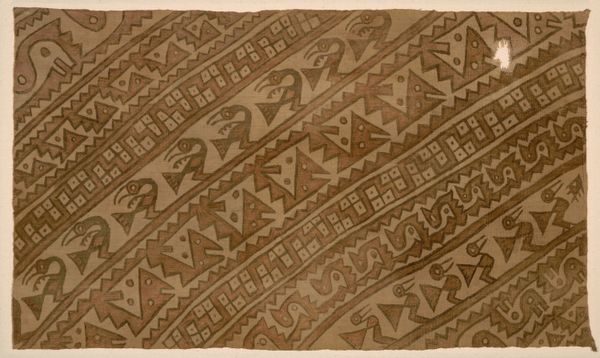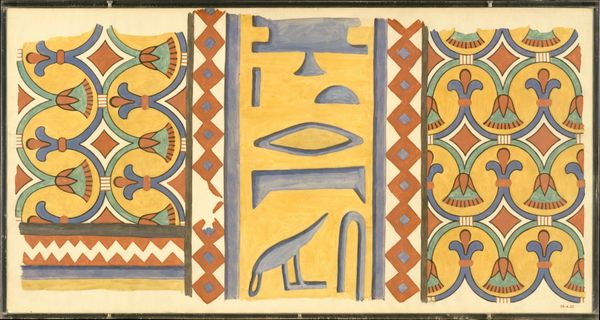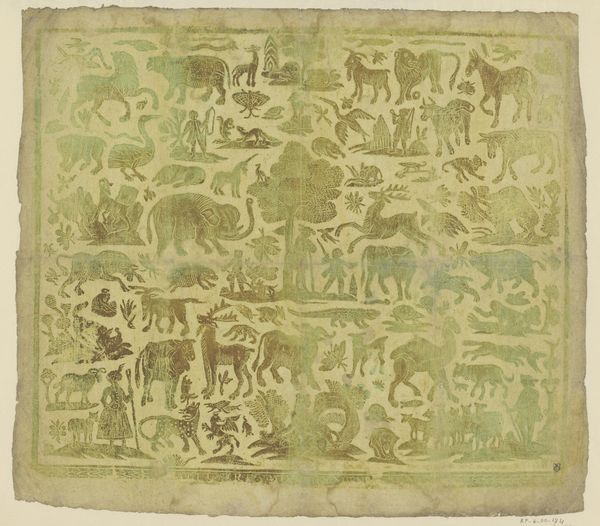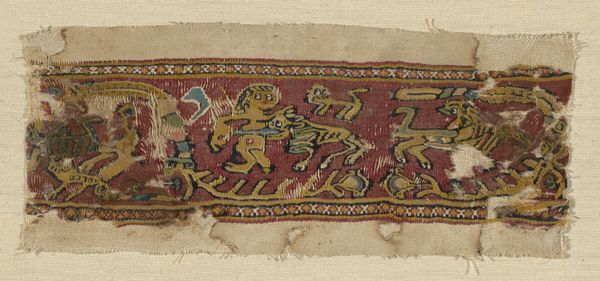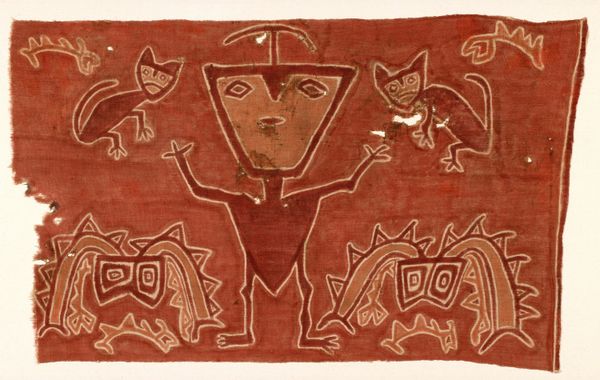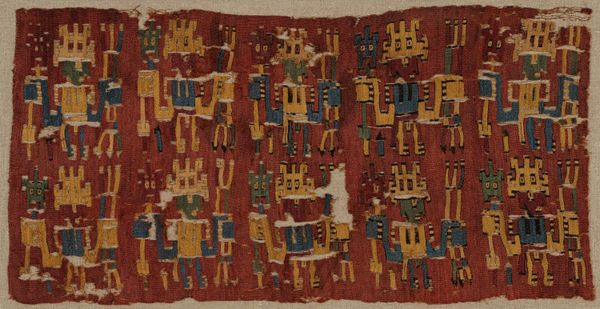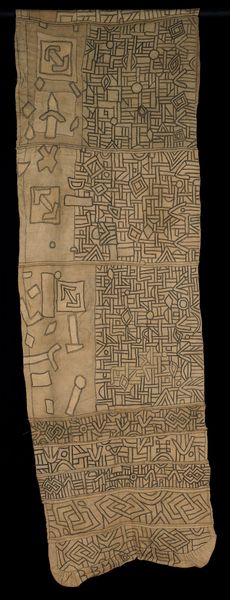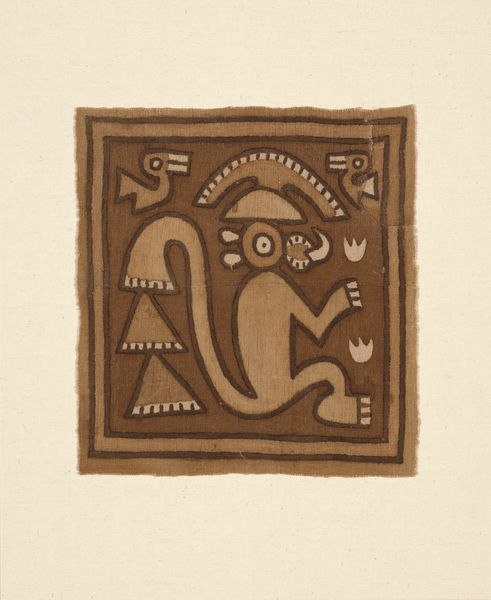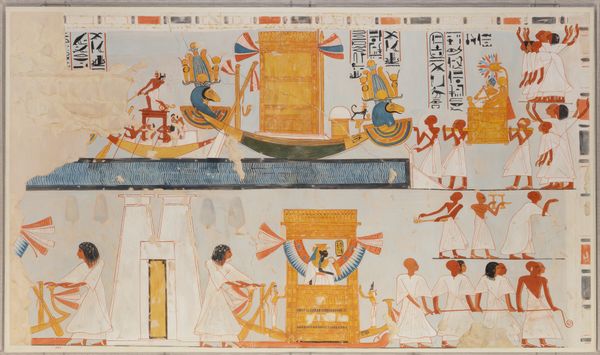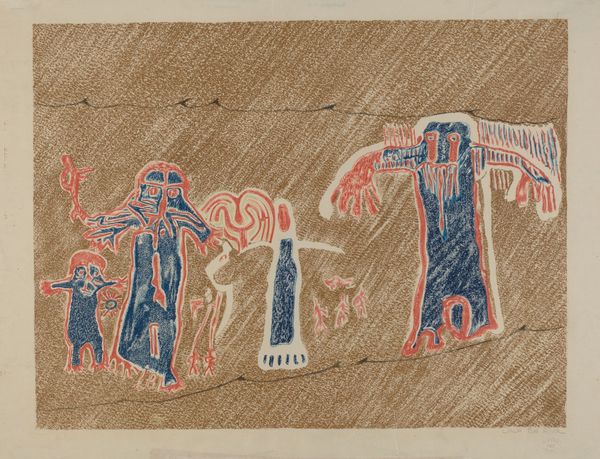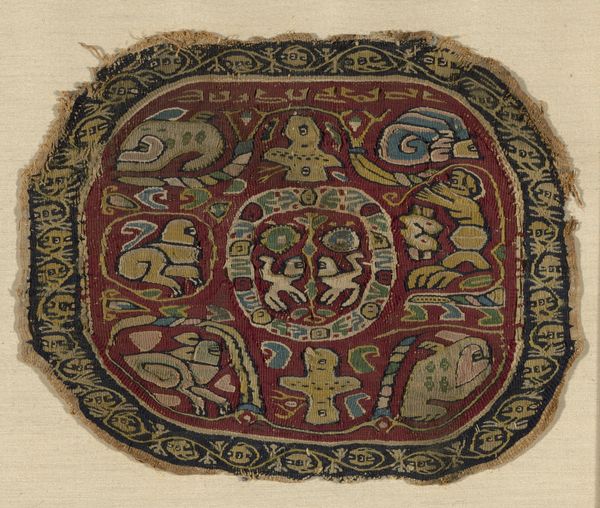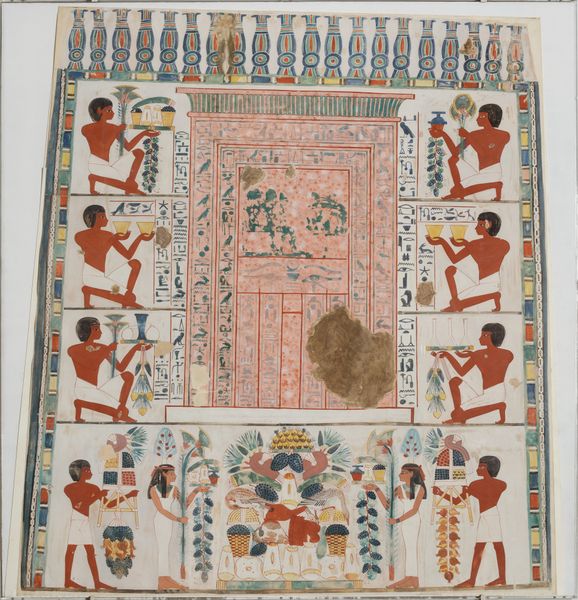
fibre-art, weaving, textile
#
fibre-art
#
weaving
#
textile
#
geometric
#
line
#
indigenous-americas
Dimensions: approx. 83.8 × 134.6 cm (33 × 53 in.)
Copyright: Public Domain
Curator: Let's turn our attention to this intriguing painted textile, believed to have been crafted by the Chancay people around the year 1000. It resides here at the Art Institute of Chicago, a remarkable piece of pre-Columbian artistry. Editor: It has such a whimsical, dreamlike quality. The muted color palette gives it an antique appearance that adds to the storytelling, doesn’t it? The imagery seems intentionally naive. Curator: Observe the prominent use of line. The artist has employed bold outlines to delineate the various figures, giving each one a clear, almost diagrammatic presence. Notice the stylized birds and geometric motifs and their placement across the woven material. Editor: Yes, there is certainly a story happening within those bounded lines and forms. Considering the Chancay culture and its proximity to coastal environments, these depictions of birds, perhaps pelicans or gannets, alongside other figures could well reflect important creation stories about coastal adaptation and resource dependence. Perhaps we’re seeing how the community makes meaning around their connection with nature. Curator: Indeed. Note the interplay between abstraction and representation. The weaving, combined with applied drawing elements, flattens the forms, pushing against any illusion of depth. It's a deliberate manipulation of the pictorial plane. Editor: And thinking about textile production in the Andean context—weaving as a communal act, as a method of inscribing and passing down communal knowledge and value... We’re perhaps observing an ancient form of intersectional feminism in action here: the work is narrativizing local oral histories and knowledge and affirming gender and community roles through textile manufacture. Curator: Fascinating perspective. I’d add that by carefully orchestrating these figures against the unpainted textile substrate, a visual rhythm takes hold. Each shape speaks clearly, in dialogue with its neighbor. Editor: Agreed. Viewing this artwork today also reminds me of what we are currently losing due to environmental racism, poverty, and industrialization. A deeper, contemporary appreciation for such textiles reminds us to preserve these types of cultural memory before they, too, disappear from view. Curator: A very fitting conclusion. Hopefully, it has encouraged everyone to view this textile with fresh eyes.
Comments
No comments
Be the first to comment and join the conversation on the ultimate creative platform.
